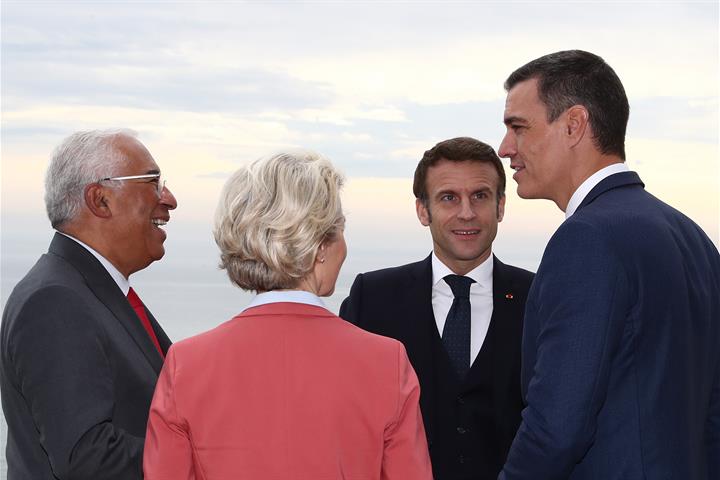From pv magazine Spain
Spanish President Pedro Sánchez has met in Alicante, Spain, with French President Emmanuel Macron and the Portuguese Prime Minister António Costa to discuss the H2Med energy interconnection project – the first green corridor to connect the Iberian Peninsula with the city of Marseille, France.
This meeting, which included European Commission President Ursula von der Leyen, took place at the EU Intellectual Property Office. The leaders met in response to a commitment made by the three countries in Brussels in October. The three leaders agreed to work together to launch a transnational hydrogen pipeline.
“The work carried out over the last month by the technical teams of the three governments has made it possible to outline the objectives of H2Med, and has specified that the project has two fundamental parts,” said Sánchez. “For one side, the route from Portugal to Spain, specifically from Celorico da Beira to Zamora; and, on the other hand, the route from Spain to France through the Mediterranean, from Barcelona to Marseille.”
According to the preliminary technical specifications of the H2Med project, the section between Celorico, Portugal, and Zamora, Spain, will extend across 248 kilometers. The estimated cost is €350 million ($369.5 million). For the Barcelona-Marseille section, costs are expected to rise to €2.5 billion for a 455-kilometer connection.
Popular content
The project outlined this seek by the leaders of Spain, France and Portugal in Alicante will be the first major hydrogen corridor in the European Union. Although it was initially envisioned to also transport gas, now it will focus solely on green hydrogen, so it falls under the RePowerEU Plan.
The presence of the president of the European Commission at the presentation of the project could be understood as a show of support. Before Dec. 15, 2023, H2Med will be presented as a Project of Common Interest (IPCEI). That will give the developer access to European funding sources such as the “Connecting Europe” facility, which can cover up to 50% of eligible initiatives.
Von der Leyen noted the suitability of the common project. “The H2MED project is heading in the right direction. It has the potential to help us build a European backbone for transporting hydrogen,” she said.
Sánchez has indicated that some of the infrastructure could be in operation by the end of this decade. He confirmed that “it will be capable of transporting 10% of the EU's hydrogen consumption by 2030,” which corresponds to around 2 million tons per year.
This content is protected by copyright and may not be reused. If you want to cooperate with us and would like to reuse some of our content, please contact: editors@pv-magazine.com.



Just a question. Which country will produce the H2 ? Where is the plant?
spain will produce